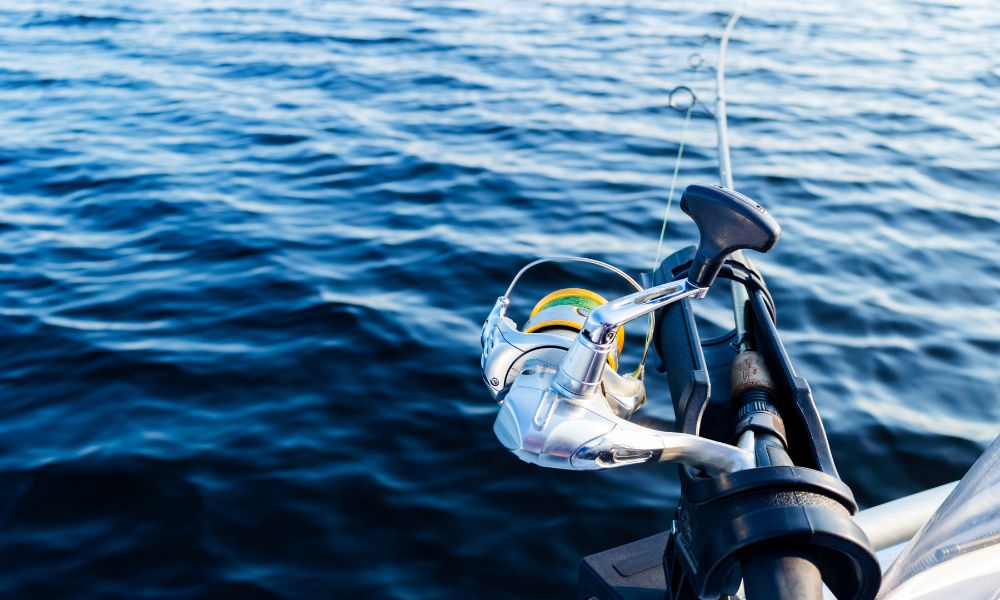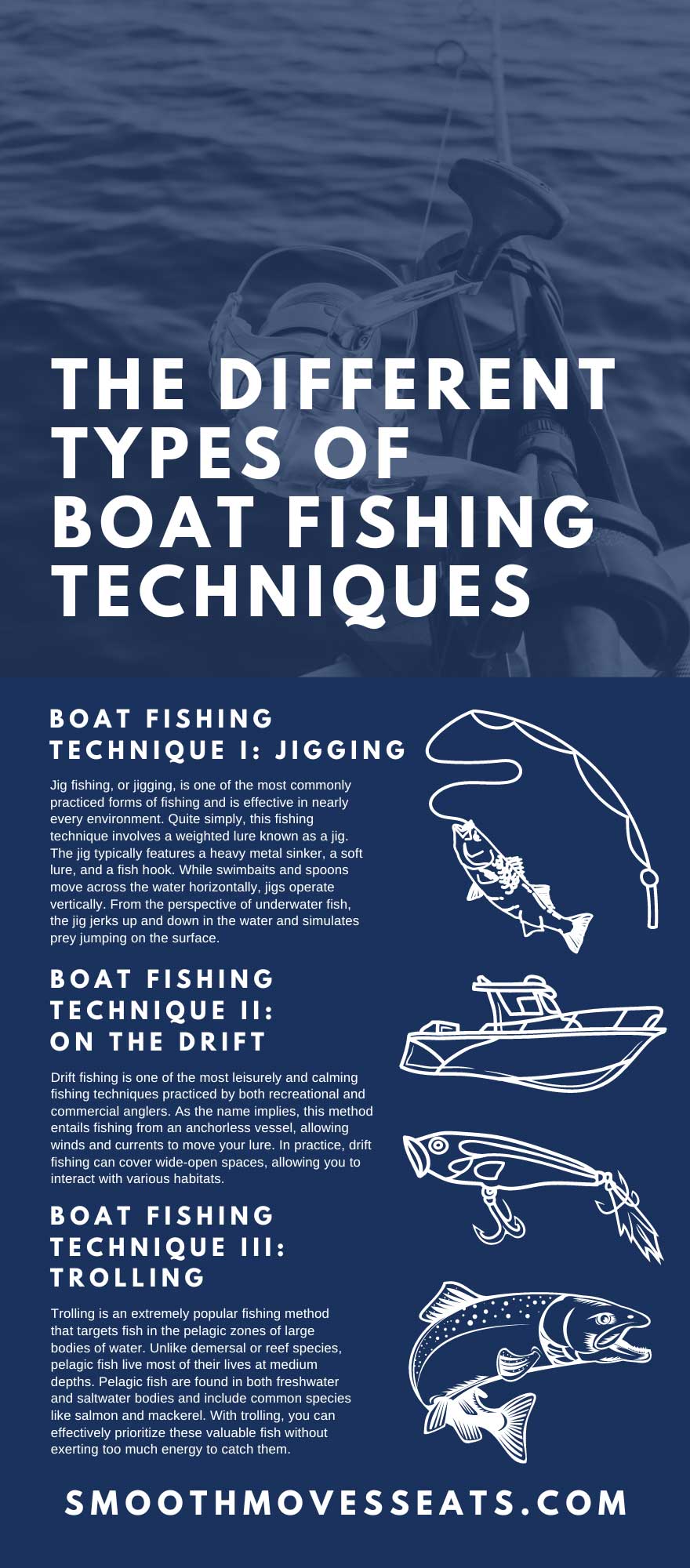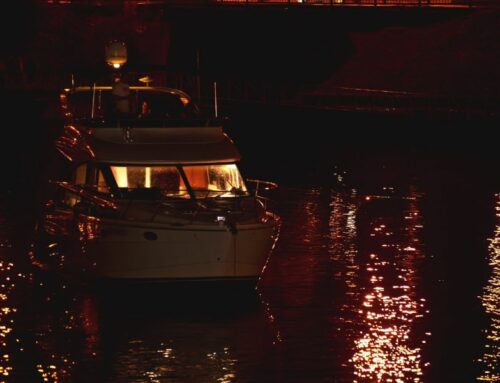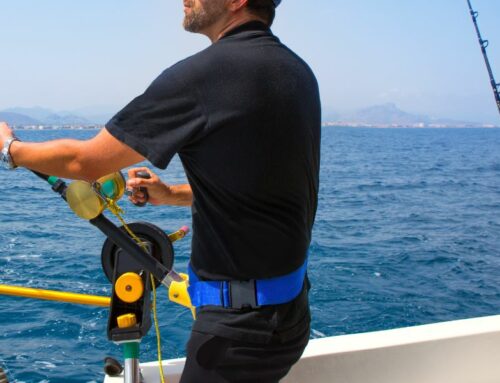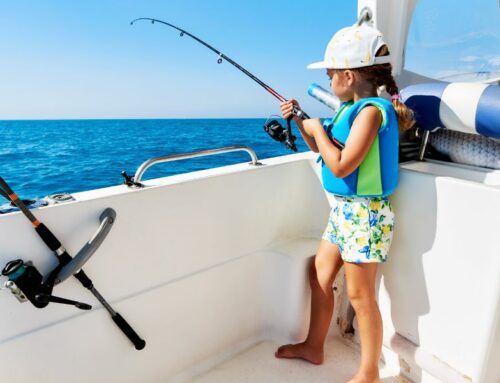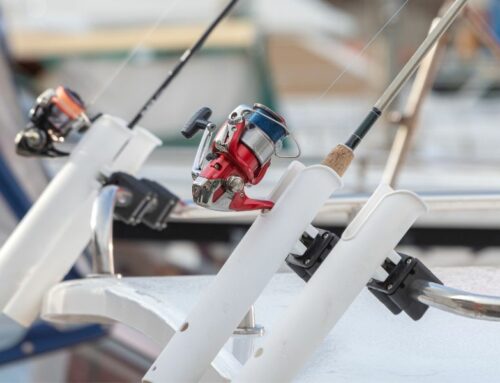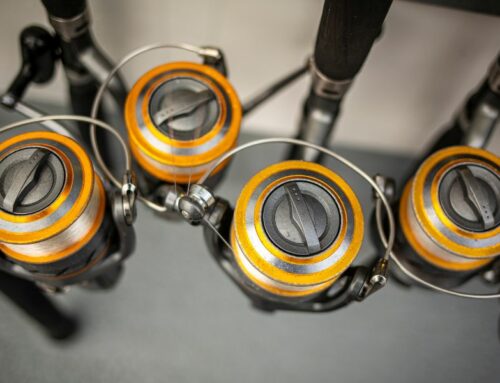A true master angler can utilize a wide array of casting and catching methods to bring home bountiful hauls regardless of the environment. And the only way to master these fishing practices is by learning more about their functions, benefits, and common applications. Read on to discover all of the different types of boat fishing techniques, including practical and beneficial methods as well as unique, less-effective fishing experiences. It’s important to note that some of these activities, such as bottom fishing or handlining, can also be used when fishing from docks or banks; however, we’re focusing strictly on angling while onboard a vessel.
Boat Fishing Technique I: Jigging
Jig fishing, or jigging, is one of the most commonly practiced forms of fishing and is effective in nearly every environment. Quite simply, this fishing technique involves a weighted lure known as a jig. The jig typically features a heavy metal sinker, a soft lure, and a fish hook. While swimbaits and spoons move across the water horizontally, jigs operate vertically. From the perspective of underwater fish, the jig jerks up and down in the water and simulates prey jumping on the surface. As such, jigging can be highly stimulating and cause feeding frenzies near the surface, increasing your chances of hooking your line.
Of course, jigging involves much more than specific gear—you must manually bob your fishing rod to activate the jig. As the jig sinks below the surface, you must tug upward to pull the lure back to the surface. This physical activity isn’t extremely demanding but involves more labor than other fishing techniques on this list. Jigging is very cost-effective and often doesn’t require live bait to attract fish. Plus, this method makes challenging deep-water fishing endeavors more possible.
Boat Fishing Technique II: On the Drift
Drift fishing is one of the most leisurely and calming fishing techniques practiced by both recreational and commercial anglers. As the name implies, this method entails fishing from an anchorless vessel, allowing winds and currents to move your lure. In practice, drift fishing can cover wide-open spaces, allowing you to interact with various habitats.
You can change out your lure with either sinkers or bobbers to target specific species of fish as you drift past different locations. Use weighted lures to catch bottom-dwellers and bobbing lures for surface fish. This method has proven to be so effective that many commercial businesses utilize drift fishing—along with jigging—around shipwrecks to catch massive hauls of sea life. Certain fish will eagerly nibble at drifting lures, while others may require natural bait.
Boat Fishing Technique III: Trolling
Trolling is an extremely popular fishing method that targets fish in the pelagic zones of large bodies of water. Unlike demersal or reef species, pelagic fish live most of their lives at medium depths. Pelagic fish are found in both freshwater and saltwater bodies and include common species like salmon and mackerel. With trolling, you can effectively prioritize these valuable fish without exerting too much energy to catch them.
To troll, simply cast your line from the rear of your vessel, allowing the moving boat to tow your lure along and simulate swimming prey. Special outriggers and downriggers keep your lure at a desired depth, and a trolling-specific motor keeps your boat moving without producing too much noise, which could scare away the fish. Don’t confuse trolling with trawling, which is a similar fishing technique that utilizes a moving net.
Boat Fishing Technique IV: Bottom Fishing
If you’re hunting for groundfish species like crappie and bream, bottom fishing is your ideal fishing technique. Also known as legering, this angling method doesn’t utilize floating lures; instead, weights help your line sink to the demersal zone of a deep body of water. Along with traditional sinkers, you can attach a cage feeder to your bottom fishing lure to attract more potential catches. Due to a lack of control over your line, natural and live bait is highly recommended for stimulating feeding activities. Additionally, ensure your lure makes contact with the bottom of the body of water to achieve the best results.
Unique Fishing Techniques: Handlining, Kite Fishing, Kayak Fishing, & More
The four boat fishing techniques listed above are all highly effective and refined angling methods that, when utilized properly, yield more significant hauls. However, some potentially less effective fishing techniques offer a unique and rewarding experience. They might not guarantee a large catch at the end of the day, but they’re worth trying at least once. Handlining is the most ancient form of fishing and, as the name suggests, only requires your hands and a fishing line. Often used for catching groundfish species, handlining offers you a chance to experience angling in a raw yet relaxing state.
Kite fishing is another unique form of fishing; similar to handlining, this method is suitable for fishing from the banks or onboard a boat. Small kites are attached to fishing lines to replicate trolling bait. As a result, fish are highly stimulated and attracted to the surface. Not to mention, the kite is away from the water and completely silent—unlike a boat’s motor—making this the most stealthy version of trolling. Proper kite fishing does require trial and error, but it’s highly useful in smaller, quiet bodies of water. Kayak fishing differs slightly from other forms of angling because certain watercraft considerations and modifications must be made to account for the smaller boat. For example, certain equipment and fishing gear are attached to the exterior of the vessel or simply left on shore for the sake of space. Additionally, the fishing line is cast over the side of the kayak, which is different from other boat fishing techniques.
Utilize any number of these different types of boat fishing techniques to vastly improve your skills and ensure greater hauls during each trip. Furthermore, guarantee a better angling experience overall by investing in high-quality shock-absorbing boat seats from Smooth Moves. We offer advanced suspension systems for your existing vessel seating to eliminate body aches and overall stress. Use these improved seating systems, along with the listed fishing techniques, to become the ultimate angler.



